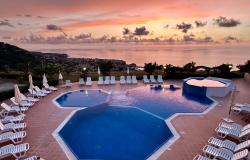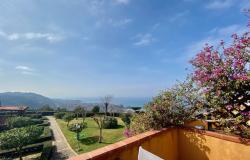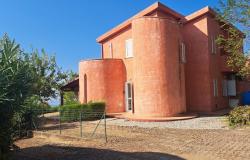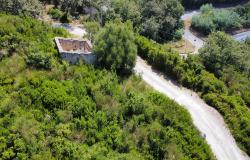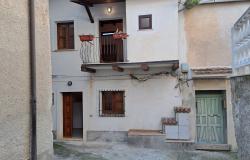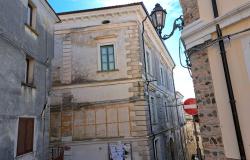Carefully tucked away in an envelope with my mother’s belongings is a photo of her as a young woman. She is leaning against a terrace. Behind her, the sun is setting over the azure waters of the Tyrrhenian Sea, its fiery glow illuminating Santa Maria dell’Isola, a fairytale-like church perched on a rocky promontory. Growing up, I would sit and stare at this picture, fascinated by the view and by the rare glimpse it provided into my mother’s past.
It’s the beginning of summer and the clifftop town of Tropea is abuzz with locals gathered along its atmospheric streets. A mix of architectural styles pay homage to past empires - Arabs, Normans, Byzantines and Bourbons have all left their collective influence. I spot an empty chair and take my place amid the old palaces that once housed Italy’s noble families, now an inspiring backdrop for alfresco dining. I order an Aperol Spritz and turn to watch a young woman in a floral dress amble across the cobbled-stones, her brown locks bouncing with every step. In an instant, she disappears into the crowd taking their evening passeggiata.
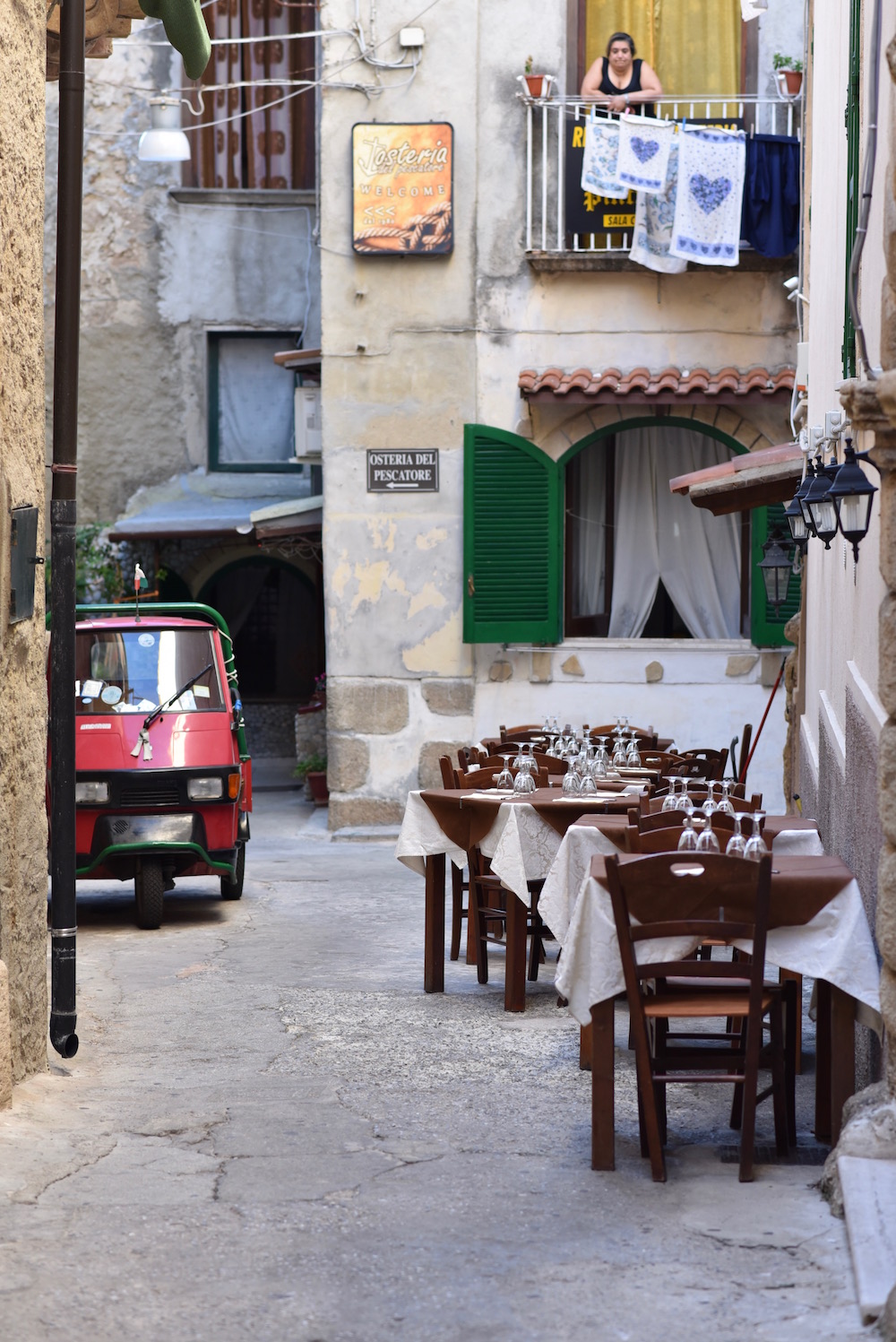 [Street in Tropea, photo by: filomena rosati]
[Street in Tropea, photo by: filomena rosati]
“Signora, your drink!”
I take a sip while watching a group of diners raise their glasses in a toast, the sound of their Calabrese dialect is old, yet familiar. Memories arrive like the encroaching twilight and carry me away to family gatherings in Toronto, Canada, to a time when homemade wine flowed freely along with tales of childhood in southern Italy. The fisarmonica (Italian accordion) accompanied everyone as they sang along to old folk songs, their smiling faces tinged with nostalgia. Decades later, Calabria, the “toe” of Italy’s boot, still echoes of an era past.
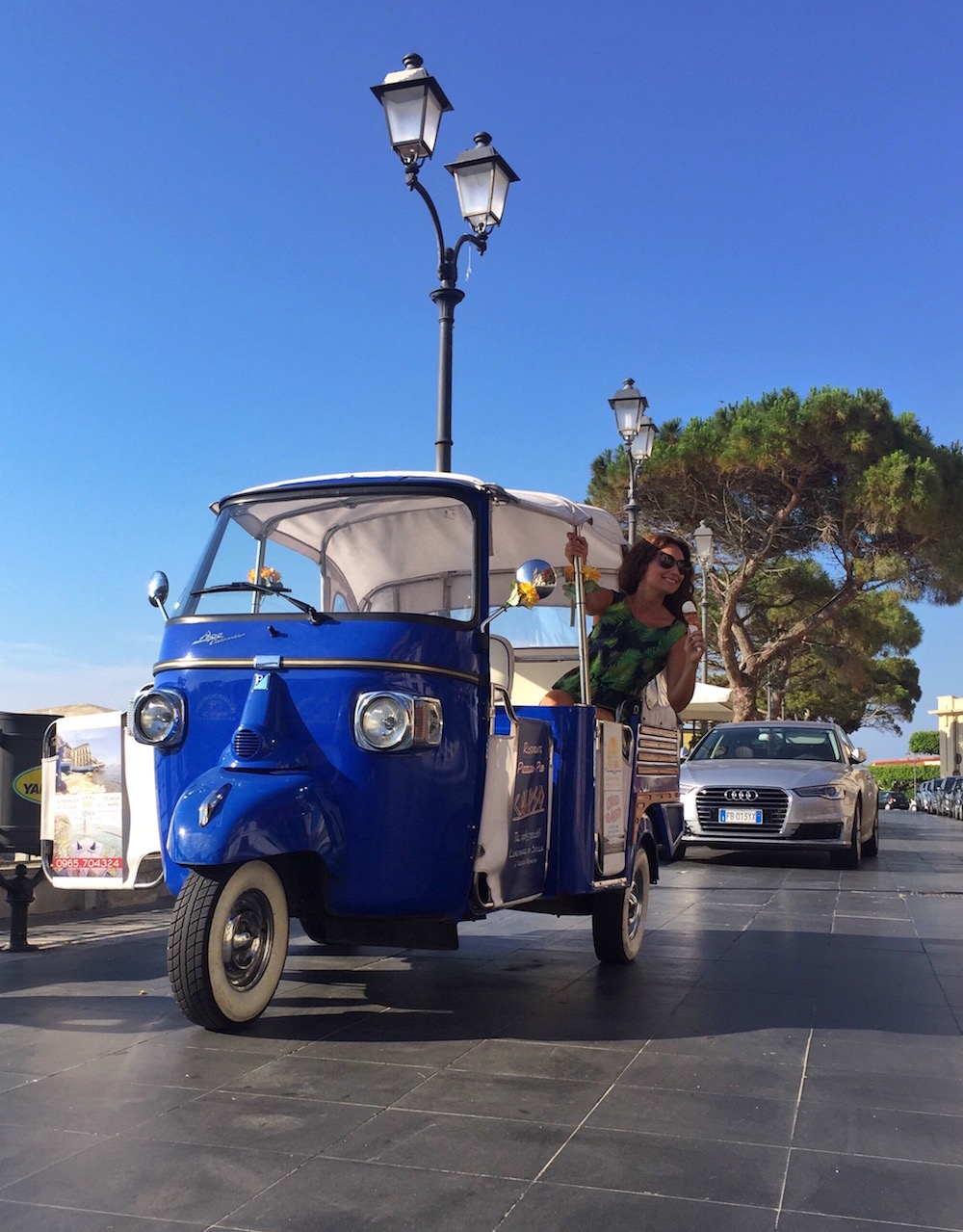 [The author in Calabria]
[The author in Calabria]
A region whose beauty is often overshadowed by tales of immigration, poverty and corruption, Calabria is not on many travel lists - most only visit the region because they have ancestral ties to it. Like many travellers, I’ve strolled past ancient ruins in Rome and admired Renaissance art in Florence, but with each passing visit I found myself longing for the Italy of yesteryears. And Calabria, with its unspoilt natural splendours, culinary cultural and age-old traditions, is precisely the less globalized Italy I seek. I’ve come to explore sleepy seaside villages, eat figs in the countryside, speak my native Calabrian and relive moments that remind me of childhood.
Here in Italy’s deep south, is a place where miles of swoon-worthy coastline wrap around picturesque villages that cling to soaring mountains and swooping cliffs that descend upon pristine beaches. Calabria’s beauty is raw, at times gritty, but its 155-mile Tyrrhenian Coast, one the Ancient Greek’s named “Coast of the Gods,” rivals Italy’s famed Ligurian and Amalfi Coast. Yet despite all it has to offer, Calabria remains surprisingly overlooked.
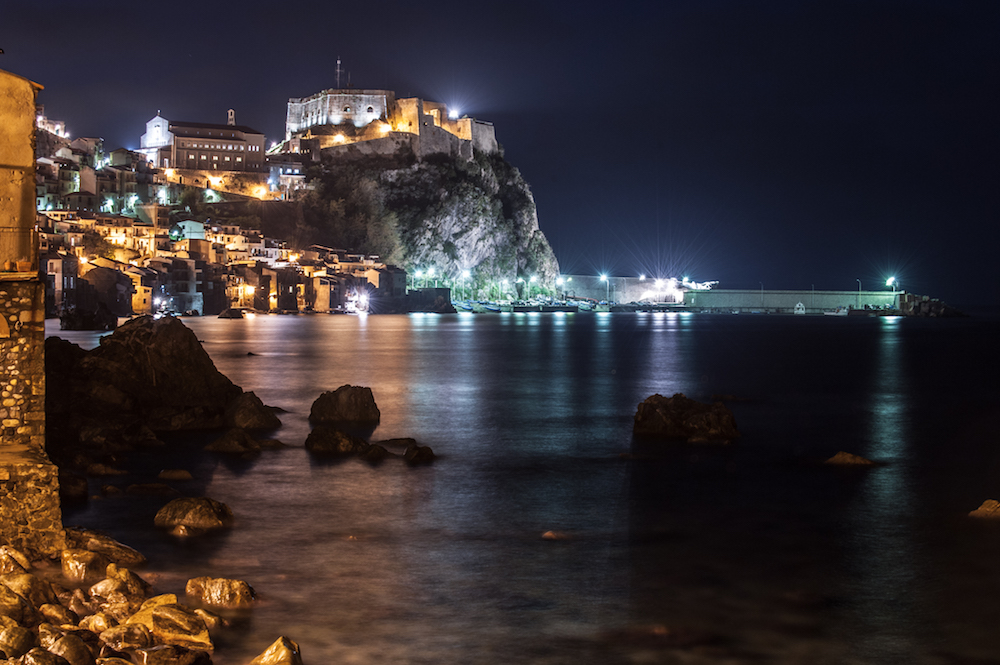 [filippo labate photography, photo by chianalea]
[filippo labate photography, photo by chianalea]
But the shift from obscurity has begun, in part, due to acclaim from the New York Times that included Calabria in its '52 Places to Go in 2017,’ and celebrity chef Lidia Bastianich, who affirmed Calabria as the top food destination for 2018. After decades of being typecast, Calabria is finally rewriting the script and stepping into the (much deserved) light - solidifying this notion were the 9 million visitors to the region last year. As much as I have known the beauty and the abundance Calabria has to offer, for me, returning has been a much more personal reason. I have wanted to reconnect to the spirit and soul of my Calabrian mother. If you have endured the untimely loss of a loved one, then you understand that sense of longing and nostalgia that stays with you always. That longing has always been there for me. It has been 17 years since I lost my mother to Ovarian cancer, and as I find myself slowly approaching the age she was at the time of her passing, it is Calabria that has been calling me not only to revisit the places she enjoyed but a place that forever speaks to me of my mother. Not necessarily to relive the hurt but to celebrate her life. Calabria is that for me and so much more.
Days later, I arrive at the lighthouse in Capo Vaticano. At 354-feet, it provides sweeping views over the coast - perfect for a scenic hike, too. From here I see the strip of sea that divides Sicily from Calabria and all eight of the Aeolian Islands floating in the horizon. At the bottom of the cape, I spy Le Grotticelle Beach, where I’ve been sipping Amaro-tonics, buying inexpensive summer dresses from migrant vendors, savouring pipping hot ciambelle (fried dough covered in sugar, a favourite childhood treat of mine), and revelling in il dolce far niente. I would have gladly spent my entire time in that crystalline water, but I was lured by the majestic landscape.
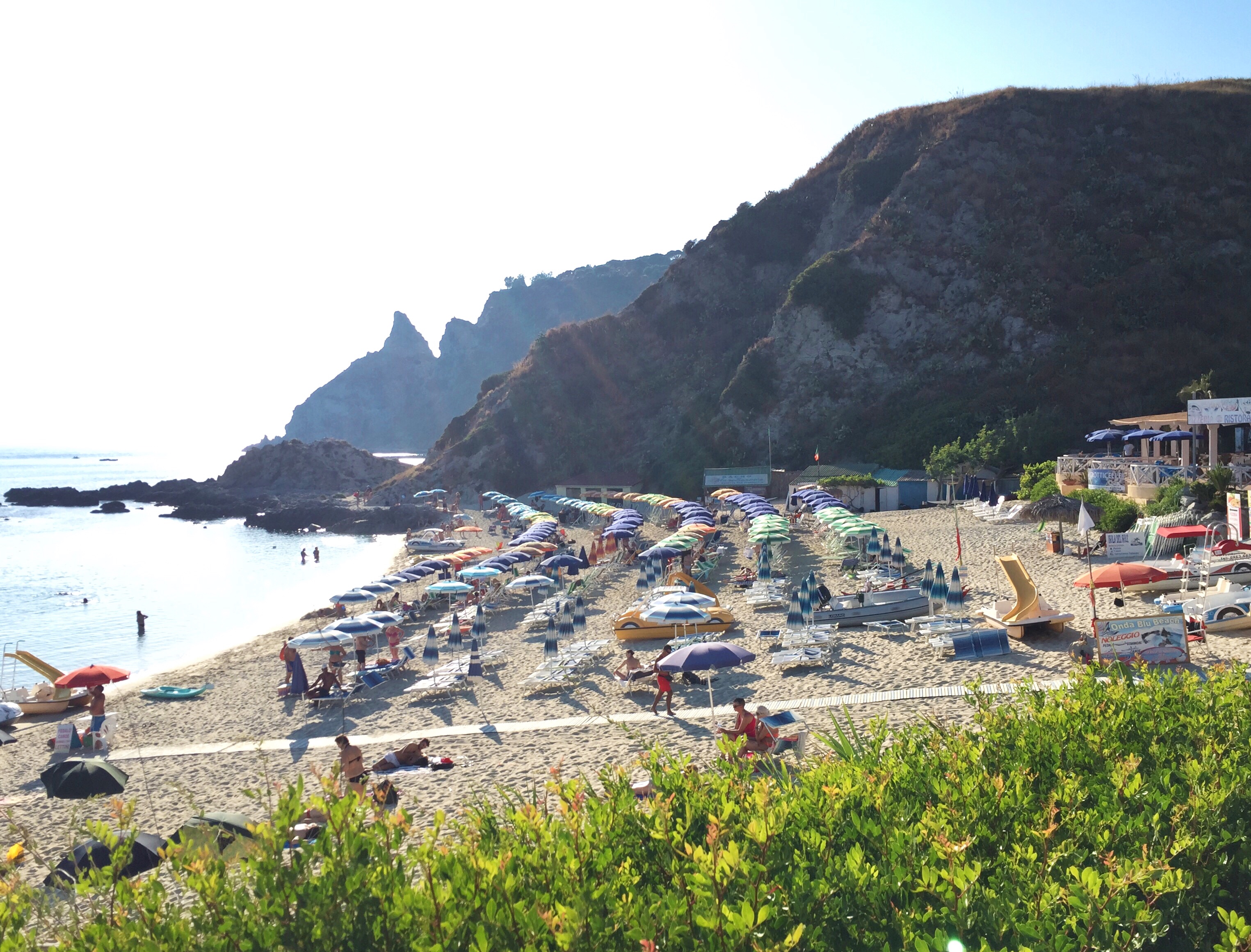 [le grotticelle beach, photo by francesca spizzirri]
[le grotticelle beach, photo by francesca spizzirri]
Travel can be a life-changing journey into the soul of a culture… a person. As I climb the steps that lead to the window to paradise, I encounter a weathered looking man with tanned skin and kind eyes who goes by the name Dottore Formaggio. Dressed in what appears to be a costume taken from a movie set in postwar Italy, complete with a feathered hat, he stands next to a white van overflowing with tomatoes, cipolle di Tropea(the area’s famed sweet red onions), peperoncino chillies and local produce. “Prova, try!” he calls out, handing me a piece of pecorino cheese and 'Nduja (a spicy, spreadable pork salami). “Where are you from?” he asks, pouring me a glass of wine made from his own grapes that he points to in a wicker basket. “Canada! My parents were Calabrese immigrants,” I announce. The creases around his dark eyes narrow as he smiles and then begins serenading me with a tarantella, “Calabrisella mia!” I laugh, half expecting a film crew to descend upon us. But no one is there. It’s just me and Doctor Cheese. I’m overcome with nostalgia when I realize I’m ‘living’ the Calabria my mother once longingly sang about, and I feel the essence of what it means to be ‘Calabrese:’ proud, humble, kind hearted and content to share a glass of wine in the company of friends, even if they happen to be new ones.
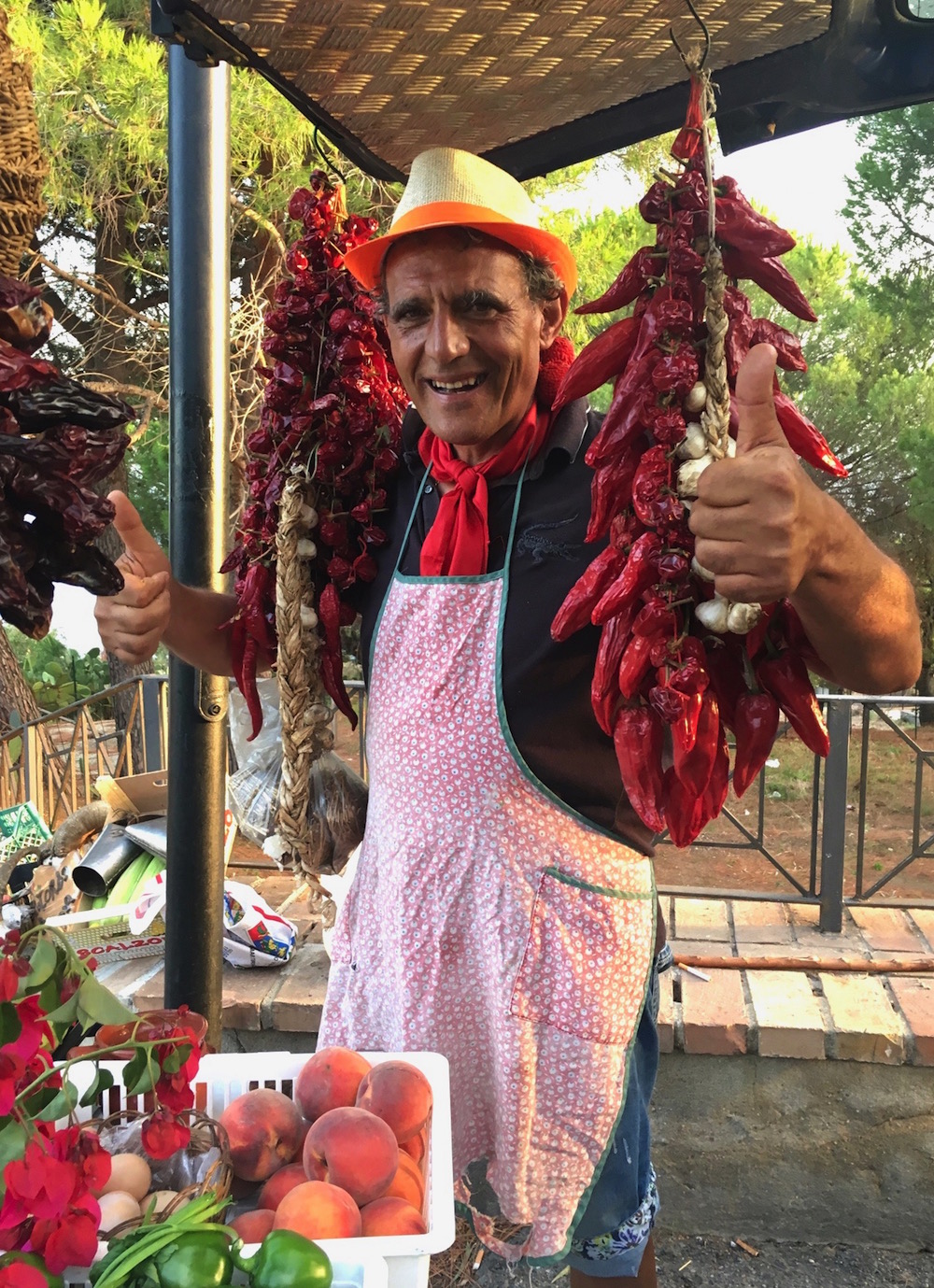 [street vendor in capo vaticano, photo by filomena rosati]
[street vendor in capo vaticano, photo by filomena rosati]
Driving between towns, I pass olive groves, fig trees and bushes of Fichi d’India (Prickly Pears) that grow wild along the side of the road - I stop and eat one under an impossibly blue sky. At the Port of Tropea, Michele Di Costa, owner of Sea Sports, awaits amid a slew of impressive yachts. We set sail along a stretch of coast where sun-kissed homes in faded pastel hues rise up along dramatic cliffs over 300-feet high. I spot the impressive Santa Maria dell’Isola flanked by powder-white sand beaches dotted with colourful umbrellas and beach towels where sun-worshippers lay. I let out a sigh, wondering if my mother laid eyes on Tropea from this vantage-point, and turn to find Michele silently observing me. “Now you know why this is the Coast of the Gods!” he says.
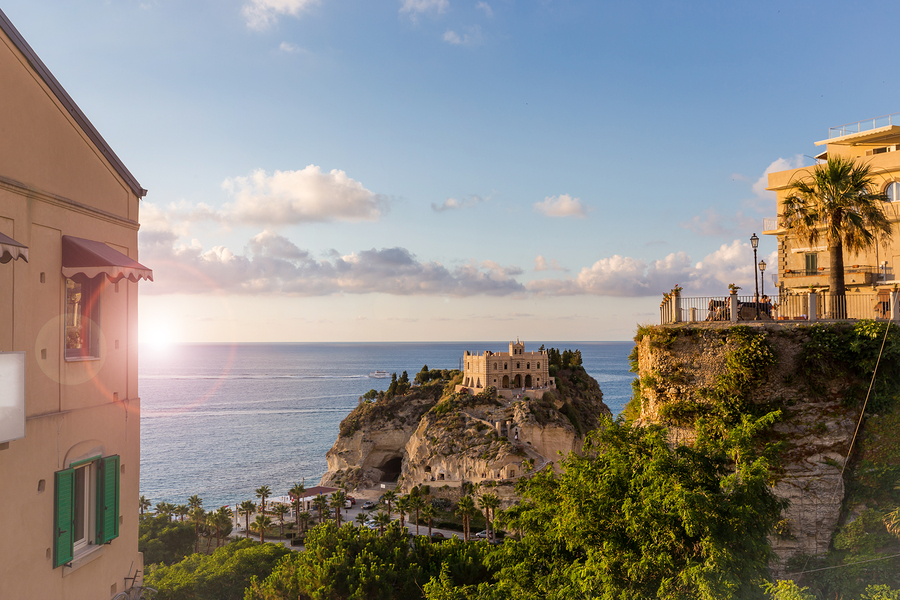 [Former 4th century monastery on top of the Sanctuary of Santa Maria Island - Tropea, Calabria, Italy]
[Former 4th century monastery on top of the Sanctuary of Santa Maria Island - Tropea, Calabria, Italy]
Once the cradle of Magna Graecia, Calabria is brimming with mythical lore. Tropea, according to legend, was founded by Hercules and named Tropheum (Trophy City) after he saved it from two giants. This land of ancient settlements is filled with castles, churches and artefacts like the 2,500-year-old Riace Bronzes in Reggio Calabria that Michele insists I visit, followed by a stroll along Italy’s most beautiful boardwalk and a gelato at Cesare’s.
For hours we sail, stopping occasionally so Michele can point out the relics of an ancient Roman port where Sextus Pompey defeated Octavius, swim in shimmering caves and secluded coves, and eat fresh ricchi di mare that Michele swims out to catch along the coral reef. It is my first time trying sea urchin and it tastes exactly how I expect it to, salty like the Mediterranean Sea.
Enroute, we dock on the shores of Tono Beach to dine at Masseria del Tono, a dig-your toes in the sand kind of place with lots of homespun charm. The restaurant’s commitment to locally sourced ingredients isn’t a farm-to-table trend, it’s a tradition passed down for generations. “Our culinary culture remains proudly and profoundly our own,” says owner, Toto Tavella. “Local fishermen, farms and artisanal producers provide a bounty that appeals because of its simplicity, not in spite of it.” This is cucina poveraat its finest.
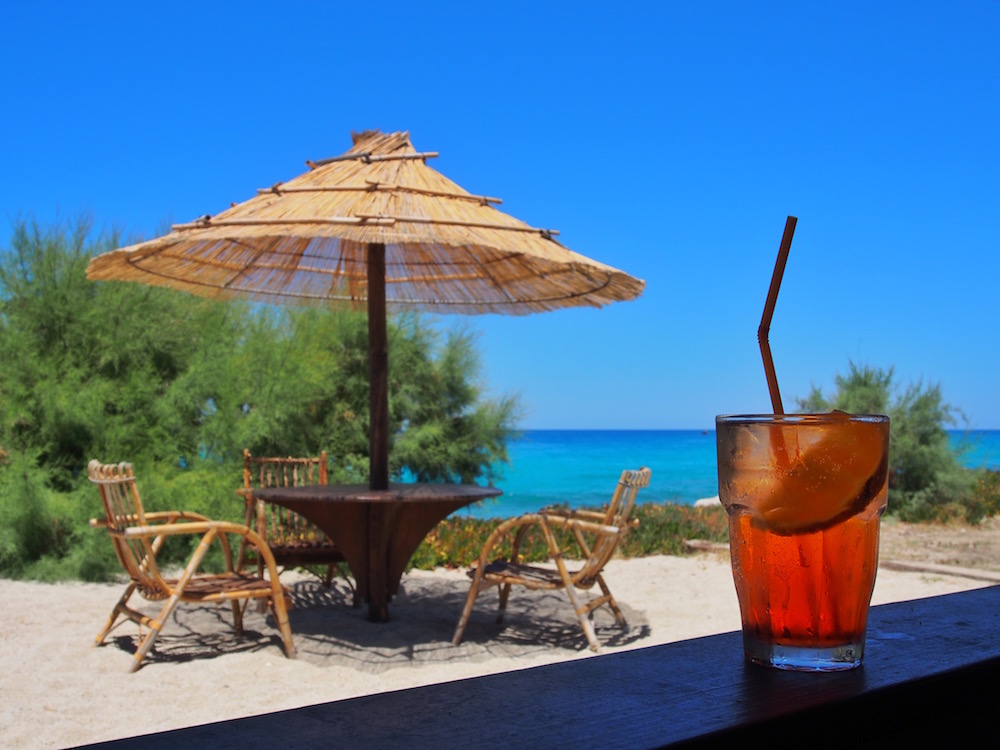 [Tono beach, photo by francesca spizzirri]
[Tono beach, photo by francesca spizzirri]
As I stare out at a steady stream of smoke escaping the cone top of Stromboli, I am served an array of antipasti by a young woman sporting a gold necklace with a corno(horn) said to ward off malocchio (evil eye) - a reminder that Calabrians have endured their share of misfortune. I gorge on Rosamarina (baby sardines packed in oil with chillies), Pipi e Patati (sweet peppers and potatoes), eggplant parmiggiana and Zuppa di Pesce (a traditional fish stew my mother made every Christmas Eve). Crispy bread drizzled in local olive oil and copious glasses of the region’s DOC Cirò wine (made from Gaglioppo grapes, one of the oldest varieties in Italy), make for the perfect accompaniment. To digest, Toto offers me a liquor made from the “fruit of Aphrodite,” the region’s fragrant bergamot. The food, much like Calabrese themselves, is humbly made of quality ingredients with a hint of spice.
The view grew more magnificent as I drove further south towards Scilla, where the imposing 11th century Ruffo Castle overlooks the coast’s lauded violet waters. Alessio, ayoung man with dark rimmed glasses and an easy smile stands by the statue of a mermaid. “Andiamo!” he says. I board his iconic blue Ape car and we set off. If ever there was a moment that embodied Italy’s dolce vita, this surely was it. With the wind in my hair and sea at my feet, I am swept away by the legendary tale of Scylla and Cariddi, a water nymph and God of the sea half man half fish.
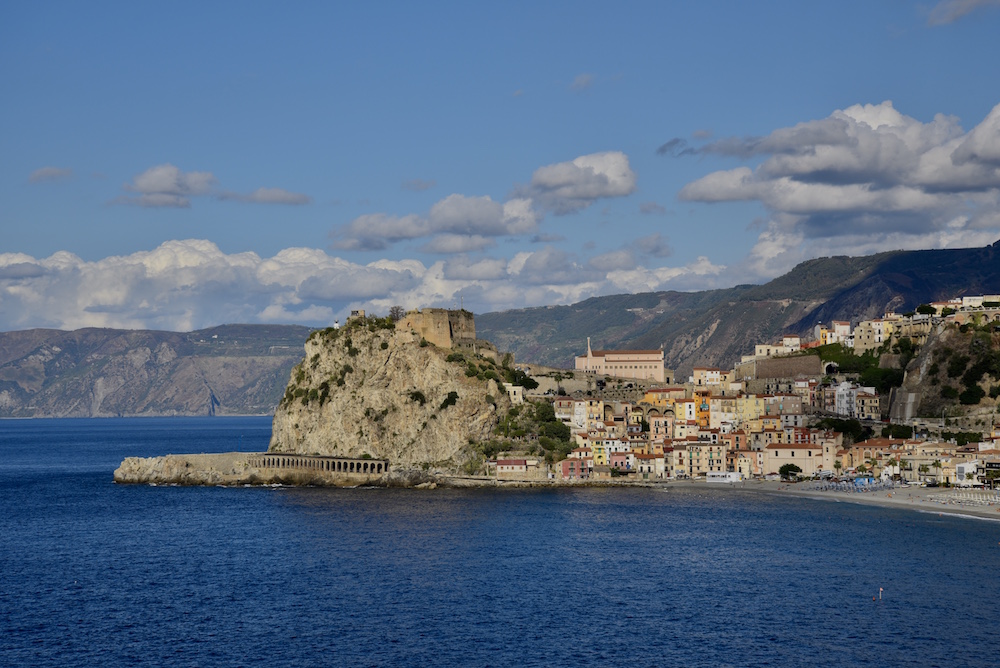 [Scilla in Calabria, photo by: filomena rosati]
[Scilla in Calabria, photo by: filomena rosati]
Over in Chianalea, “the Venice of Southern Italy,” the fishermen have returned. Their colourful boats bobbing in the water, as a crowd gathers to watch. “Guarda, nonno!” a fair-haired boy calls out to his grandfather, anxious for him to look at the large swordfish. In the background, homes line the water’s edge, glimmering against the setting sun. I make my way to Cala Delle Feluche and dine on ribbons of pasta with succulent clams and the day’s fresh catch, grilled swordfish. Gazing out at the fiery sun dipping into the Tyrrhenian Sea, I am reminded of my mother’s photo and wonder if years from now the fate of Calabria will change or if travellers can still come here knowing that the Italy of yesteryears, the Italy of my mother, awaits.
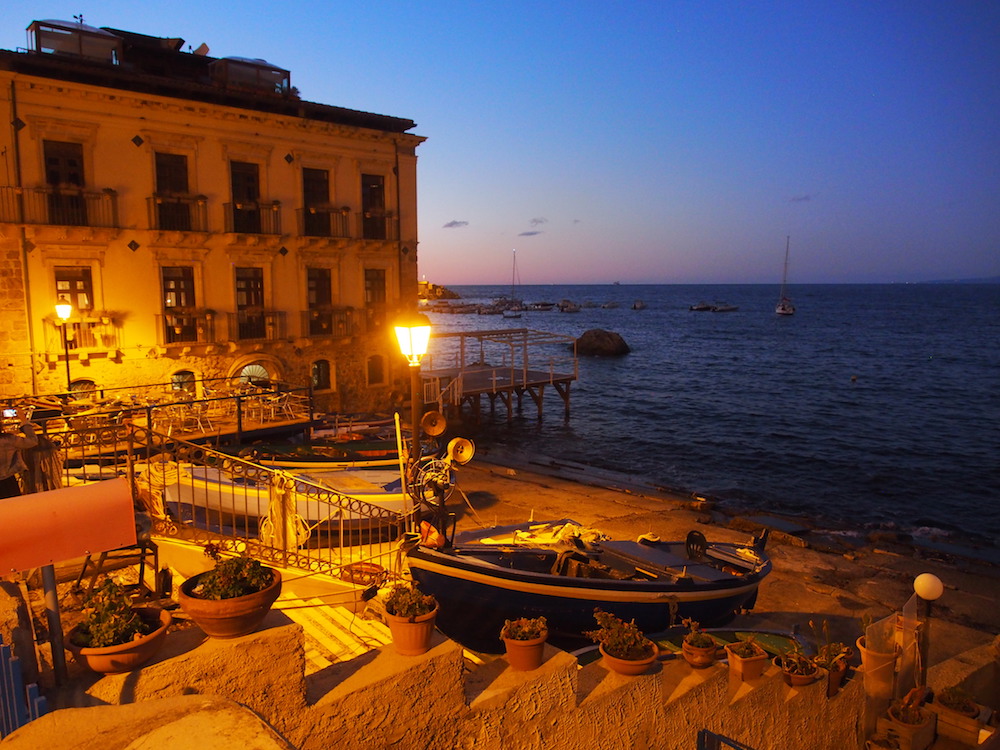 [evening in chianalea, photo by Francesca Spizzirri]
[evening in chianalea, photo by Francesca Spizzirri]
WHEN YOU GO
WHERE TO STAY: Hotel La Bussola offers an affordable stay with great food, magnificent views and access to some of the most magnificent secluded and pristine beaches in Capo Vaticano. For a more upscale experience in a beautifully converted palace, book Palazzo Mottola in the centre of Tropea.
WHERE TO EAT: In Calabria, you eat like a local, but a few stand-outs include Genius Loci and Incipit in Tropea, and ll Casato in Chianalea.
HOW TO GET THERE: You can connect toLamezia International airport from Rome and many other cities in Europe. You can also arrive by car or train.
WHAT TO DO: With 800-kms of coastline, Calabria’s beaches are some of Italy’s best. Points of interest include the seaside towns of Pizzo Calabro (where Italian Tartufo gelato was invented) and further up the coast, the enchanting Amantea, Fiumefreddo Bruzio, Diamante and Praia a Mare.

